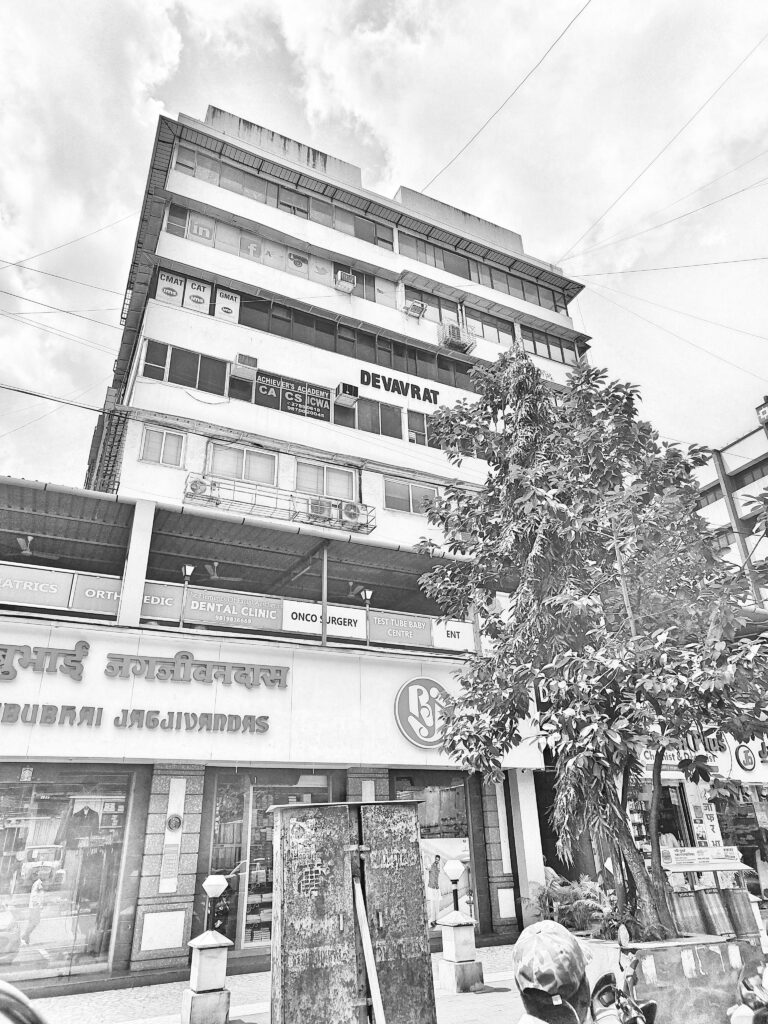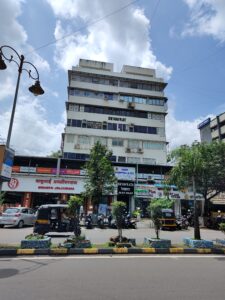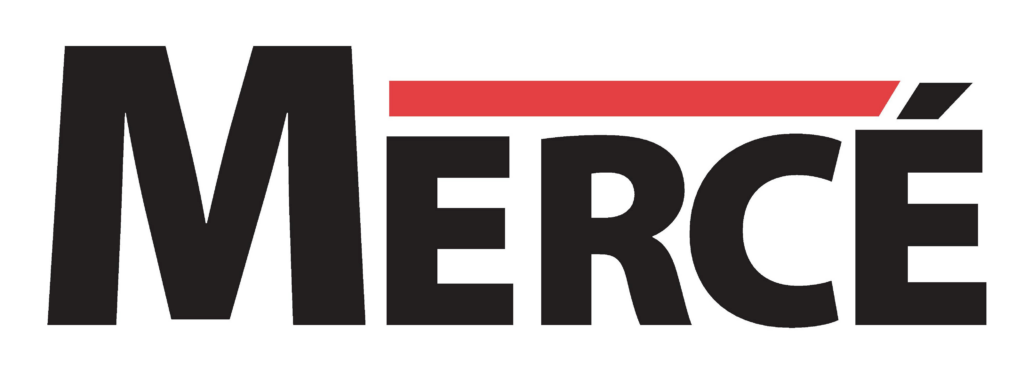After a year of us operating as The Fabulous Foursome under the name spaceNETindia.com, we realised that our clients were pushing us towards growth. So we recruited six young kids.
This is how business grows, led by the inexperienced and busy. You see two opportunities, you get busy responding to those two. You do not seek to understand larger trends, never ask “Quo vadis?” And all the questions which you did not ask come back to haunt you as cloud-sized shadows in later years. So we busily tell life, “Vade mecum”, and keep running.
If we had the gift of prescience, would we ever set out to run towards the horizon?
Anyway, we decided to grow from four to ten. The story continued.
NCST
It’s hard for the software services industry today to imagine what a place NCST was, for the nurturing of young prgrammers. The National Centre for Software Technology, in Juhu, was a breakaway from the super-elite TIFR (Tata Institute of Fundamental Research), carved out as a separate institute under the leadership of Prof S Ramani. In a world full of the Aptechs and NIITs, NCST was miles apart. NCST was to the roadside programming training institutes as the IITs were to C-grade engineering colleges. The standards of excellence of TIFR and other elite institutes were very visible.
NCST trained their students to write code on DEC Vax systems running some flavour of Unix. (BSD Unix? Ultrix? I do not remember.) Everyone worked on green-screen terminals, editing code using Emacs or VI. The examinations included something I never saw after NCST for the next two decades: automated programming tests. These apt as they were called involved a time-limited online test, where the student was supposed to code, compile, test, debug, and finally submit a program. When I say “online test“, I do not mean a browser based interface — I mean that you had to connect to the time-sharing system from your dumb terminal and take the test. The program the student wrote would not be evaluated by any human — it would be fed to an automated evaluation system which would run the program over and over, feeding it multiple sets of inputs and comparing its outputs with expected results. If your program gave the right results in each case, you passed the test. The apt problems came with examples of inputs and expected outputs, against which the student could compare his own program’s behaviour before finally submitting his code.
In a world infested with MS-DOS and Windows 3.1, NCST was the only place where students actually used email, accessed Usenet news, wrote shellscripts, worked at the shell prompt, and did not need a GUI to breathe. Given our background, this was a small oasis in the wider desert of GUI and Windows idiocy. We went to NCST to pick up students. We put up notices, got students to apply, and selected six students. Rekha, Sanjog, Amol, Henna, Indrani and Sabina. (One doesn’t forget names of the first few cohorts. You work too closely together.)
But we now needed an office!
Devavrata
I had been living in New Bombay, in rented apartments, and had befriended a broker. I asked him for an inexpensive office for seating ten people. He said that there was one office, 145 sqft, in the first floor of an office building named Devavrata, in Sector 17 of Vashi. The tiny office had a door at one end, a window at the other, and did not have any washroom — one had to use the shared facilities across the narrow corridor. Rent: Rs.4,000. (I mentally calculated that this had been our monthly total expense for dinners at the Rangoli till then.)
We got inexpensive and heavy-built tables made from a small carpentry shop in Vashi. Three of those tables became a row of workspaces for all of us. The tables cost us Rs.6,000 each. (How the hell does the mind hold onto such trivia?) We bought some more assembled PCs, computers, hooked them all up on a 10baseT Ethernet, set up a modem for Internet access and an inkjet printer, and handed over the charge of keeping everything shipshape to an eleventh member: a bespectacled, high-energy young man named Bhimraj. He was our all-purpose office assistant, handyman and everything else.

The dinners at Rangoli stopped. We discovered a snack joint in the next building called Chaat Cafe (which Raghu insisted on pronouncing “Chaaaat Cafe”), and Bhimraj would bring us plates of sev puri and chaat from there when we felt peckish in the evenings.

Work continued. We were at the fag end of the NCFM project, and Sabina was doing sterling work providing operational support on site. Sanjog jumped in with both feet into LDAP technology and built us a prototype for a user directory for MBT, which later became a key part of Manus (see below). Indrani went to an on-site assignment with Kotak Mahindra for software development, writing Perl code, and came back quite upset, saying that the senior managers there refused to believe that our small company actually had reusable code for various building blocks to help us write applications faster. Kishan had written most of them over the previous few projects. Amol resigned after a short stint, but the other five grew amazingly fast into serious, competent young leaders. I guess there is no place better for growth of young engineers than a small engineering company with few rules and lots of energy. Plus: their raw learning abilities had been honed very well by NCST.
MANUS
We got a consultancy contract to review the readiness of the WAN, servers, emails and other infrastructure for a company which was then known as Mahindra British Telecom Ltd. It was a pleasure serving Ms Vaijayanti Mauskar, who I had worked with when she was in ICICI. During the engagement, I also came to know Kiran Deshpande, their MD. I cherish these two relationships to this day.
The contract ended with me submitting a 60-page written report typeset in LaTeX (my tool of choice till date for formal documents), which Kiran corrected line by line, making comments in the margins, like a college professor. I was awestruck with his attention to detail in areas of content, technical correctness, and language. I learned from Vaijayanti and Kiran at every step. And when the consultancy ended, they asked SpaceNET to build a solution which would deliver the services they lacked. I said I’ll be happy to, if they let us keep the intellectual property ownership. They agreed — they didn’t have any use for IP ownership of such a system if they got our support. Thus was born our first product: MANUS.



MANUS (Manager for A Network Of Unix Servers) was later re-christened Merce (Messaging and Enterprise Resource Control Environment), and much later, when we renamed our company to Merce Technologies, the product was renamed Merce Servaya. In the initial years, we even thought of building a MANUS Lite, and called it MTracks.


We took almost a year to build and roll out MANUS across all the four or five locations of MBT. Our team of ten worked very well. The Unix DNA of all of us was at the core of our success. A product like MANUS could not have been conceived of by anyone who had not seen Unix, TCP/IP, UUCP, Usenet, and SMTP email. Users of MBT who till then were using MS Mail running on slow leased lines first experienced the joy of mature email, pushed out near-instantly over SMTP and pulled in using POP and IMAP.
Cash flow
No one teaches an immature business leader how cash flow can bite. As we grew, bite it did, and how.
In any services or projects industry, cash inflow is in spurts, as projects complete their milestones. Cash outflow is very steady and uniform. This difference is bridged either by large cash reserves (which no bootstrapped small services company has). If we were serving overseas clients and using the forex arbitrage opportunity, we would have had large cash reserves — this was the dot com boom after all. But we had only domestic clients.
At some point in our growth story, we began to get regular cash flow crunches, which we handled like any inept business by delaying salaries. This caused a lot of grief. The only reason our engineers stuck with us was because they thought ours was a good company to work for. This was the peak of the dot-com boom, when airplane-loads of programmers with dubious abilities were exporting themselves to the US every night from each airport.
When I look back at that period, with the deep distress is mixed a basic doubt: what will a small services company do to alleviate the inevitable cash flow pressures? The only answers I can think of are (a) negotiate with customers to have payment terms which bring in some revenue every month, not after every milestone, and (b) focus on high-margin business almost to the exclusion of India business.
I did not know it at that time, but the pressures we were going through would prove to be child’s play compared to what was to come two years later.
PRISM
The NSE threw an audacious project at us. Build a real-time risk computation engine for the core trading system on a cluster of inexpensive, redundant Unix computers.
The NSE in the 90s did not take Unix computers seriously. Their core trading engine ran on Stratus mainframes, where each logical CPU was built out of a set of four physical Motorola MC68000 CPUs, providing fault tolerance at the clock pulse level. A Stratus system literally did not miss a single clock cycle if one chip failed. Unix systems were for college students.
We executed a joint project together with faculty members of IGIDR, engineers from another small tech company, and a freelance consultant, to pull this off. The system was unlike any in any part of the world — it was performing 5,000 Monte Carlo simulations twice on each trade in the exchange, and re-calculating risk profiles using the Value-at-Risk algorithm, something considered too compute-intensive to attempt till then in real time. It was called the Parallel RIsk Machine (PRisM).
Very young engineers worked under Raghu’s leadership to build the parallel computing framework, while I coordinated with the other teams to build the final system. I can clearly remember three engineers who worked in various parts of the system at that time, in one team or other, and have gone on to build fantastic reputations for themselves: Sujoy, Vikram, and Viral. (Sujoy was in our company; Vikram and Viral were in another team.) And the PRISM system, with upgrades and modifications, continues to be a critical part of the NSE infrastructure today.
Funding
We reached a point where we realised that we too need to seek equity capital infusion. Everyone was doing it, and growth depended on having a healthy cash reserve position. We would never be able to invest in sales and marketing unless we got a step jump in our budget.
So, the hunt began. We went and met various organisations and individuals, got to know really interesting people like Aurobind Patel and Jeh Daruwala, and had mind-bending conversations with this alien species called People From The Investment World.
Finally, after 13 months of struggle and back-and-forth, we had a firm investment agreement. We would get a million US dollars, one-third in the first tranche, two-thirds in the second. 85% of the funds would be invested by an international VC and the balance 15% by an Indian investment entity.
In Aug 2000, we received the full amount for the first tranche. I remember scanning the physical cheque — it was the highest-value cheque I had seen till that date. I probably have the scanned image somewhere still.
We thought our struggles were coming to an end, our period of high growth driven by a systematic strategy would now start. We got busy renting an office of 6,600 sqft in Casa Blanca, Sector 11, CBD Belapur, and recruiting a team of young engineers. We moved into our new office in Nov 2000. We also changed our name, because we needed to register a private limited company anyway, so we now became Starcom Software Pvt Ltd (starcomsoftware.com)
Unknown to us, the Nazgul and the Uruk Hai were amassing just beyond the horizon and the whole of Technology Middle Earth would see bloodletting the likes of which had gone out of living memory by that time.


Leave a Reply